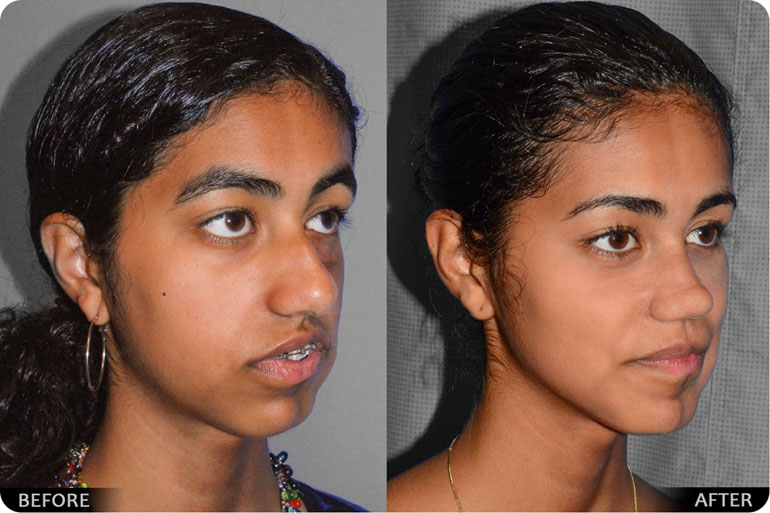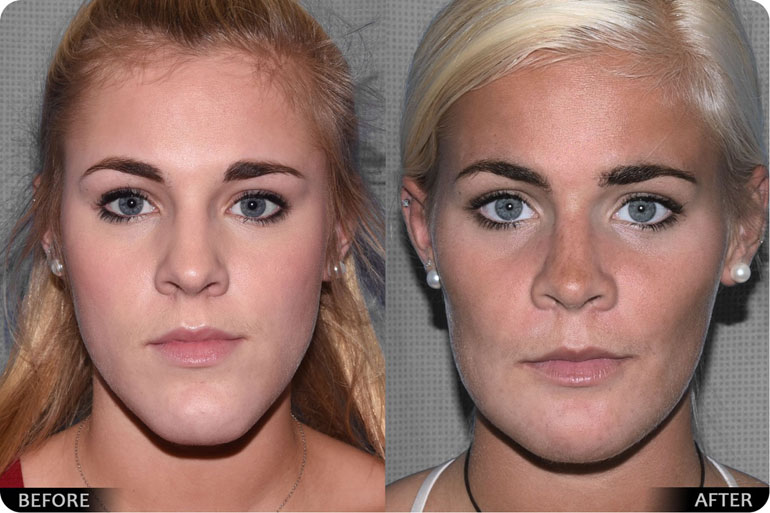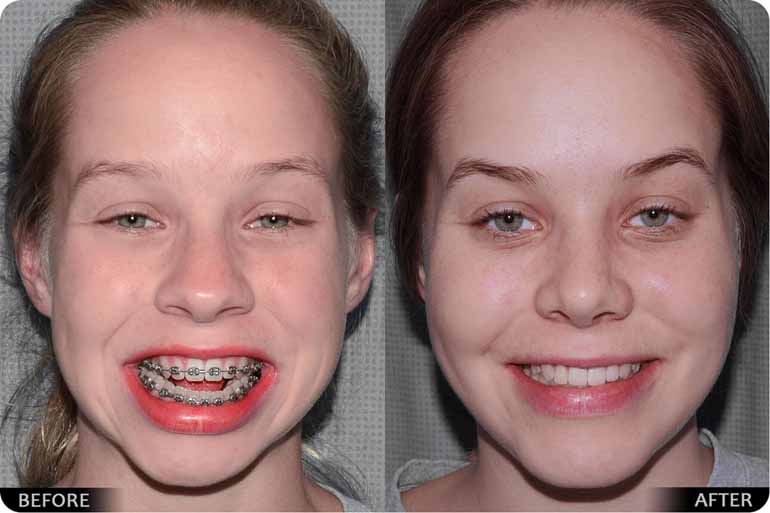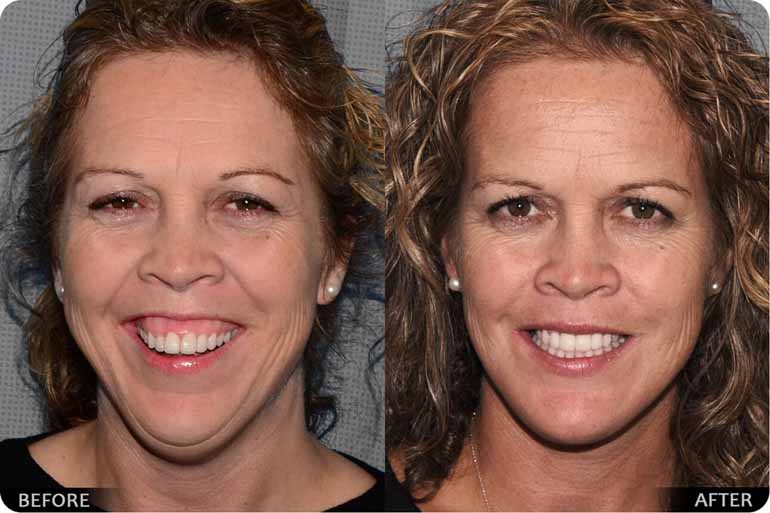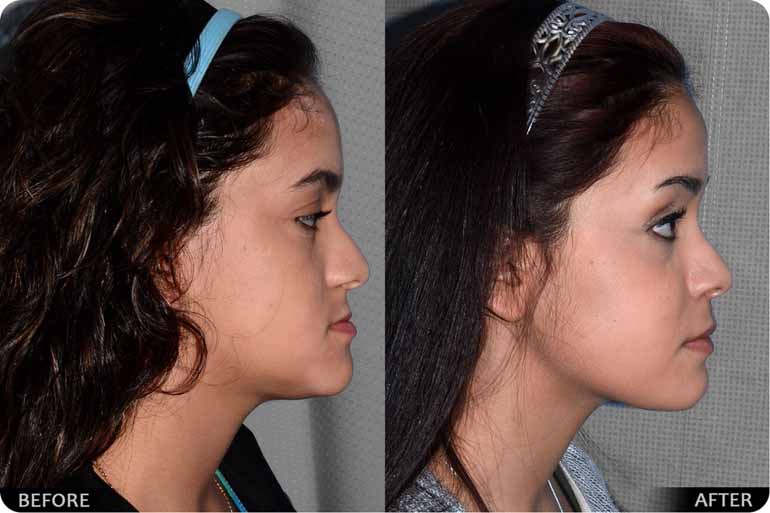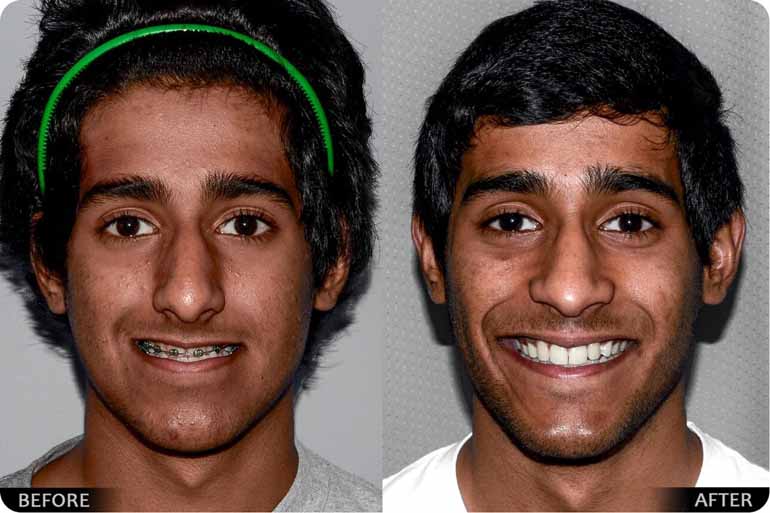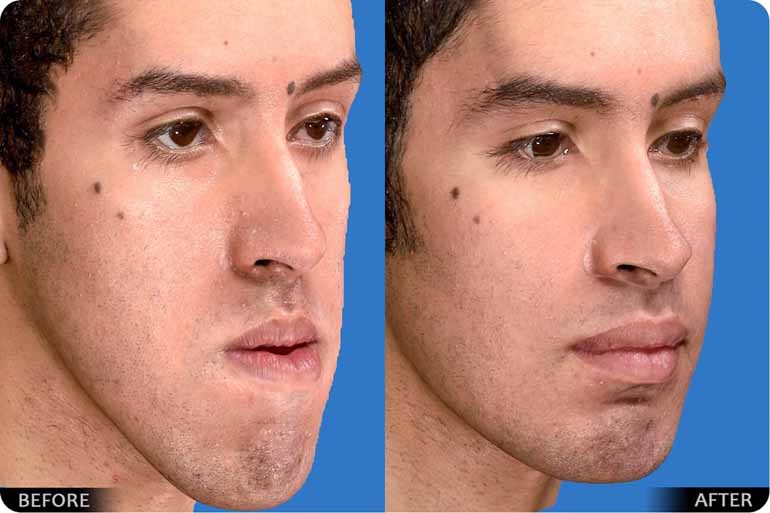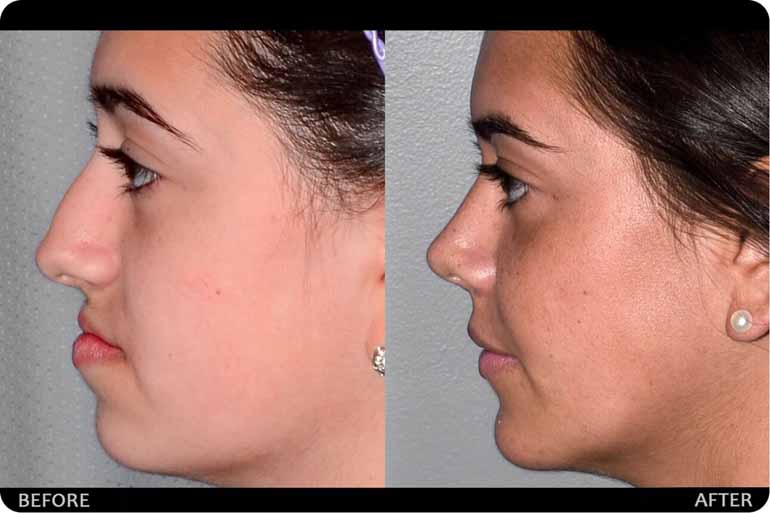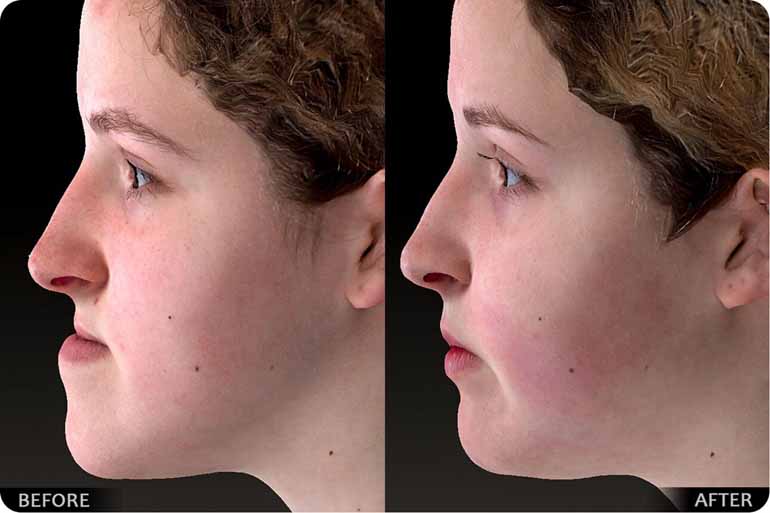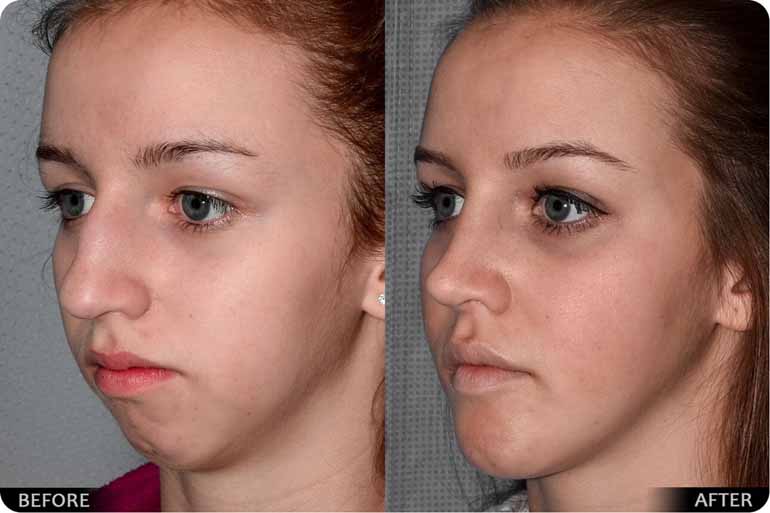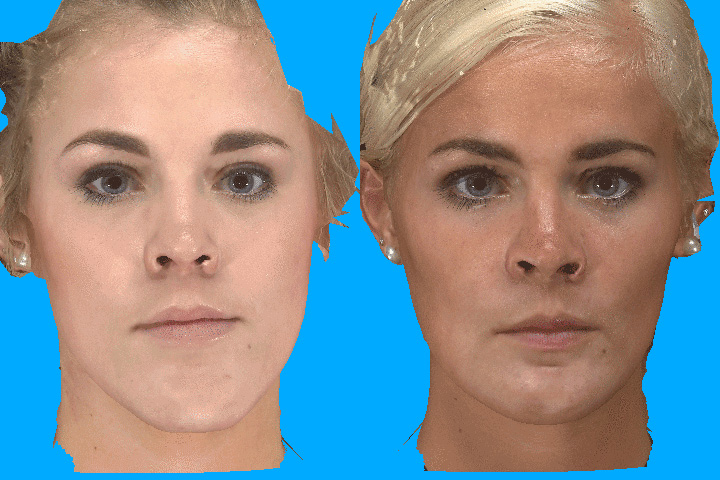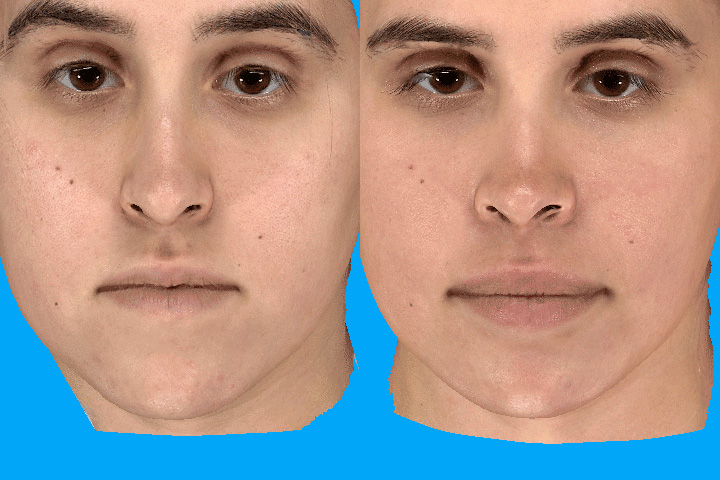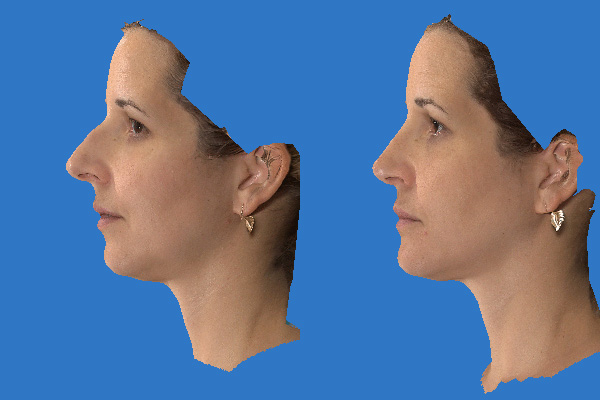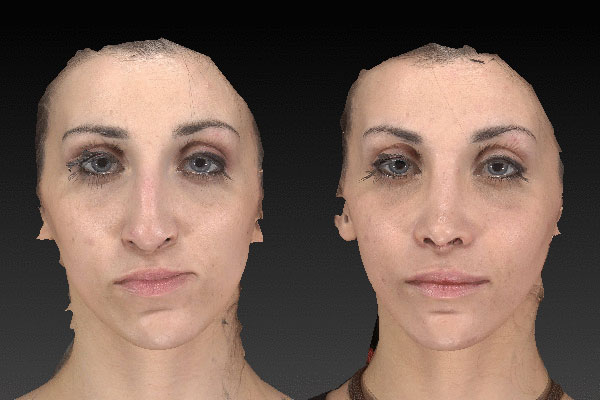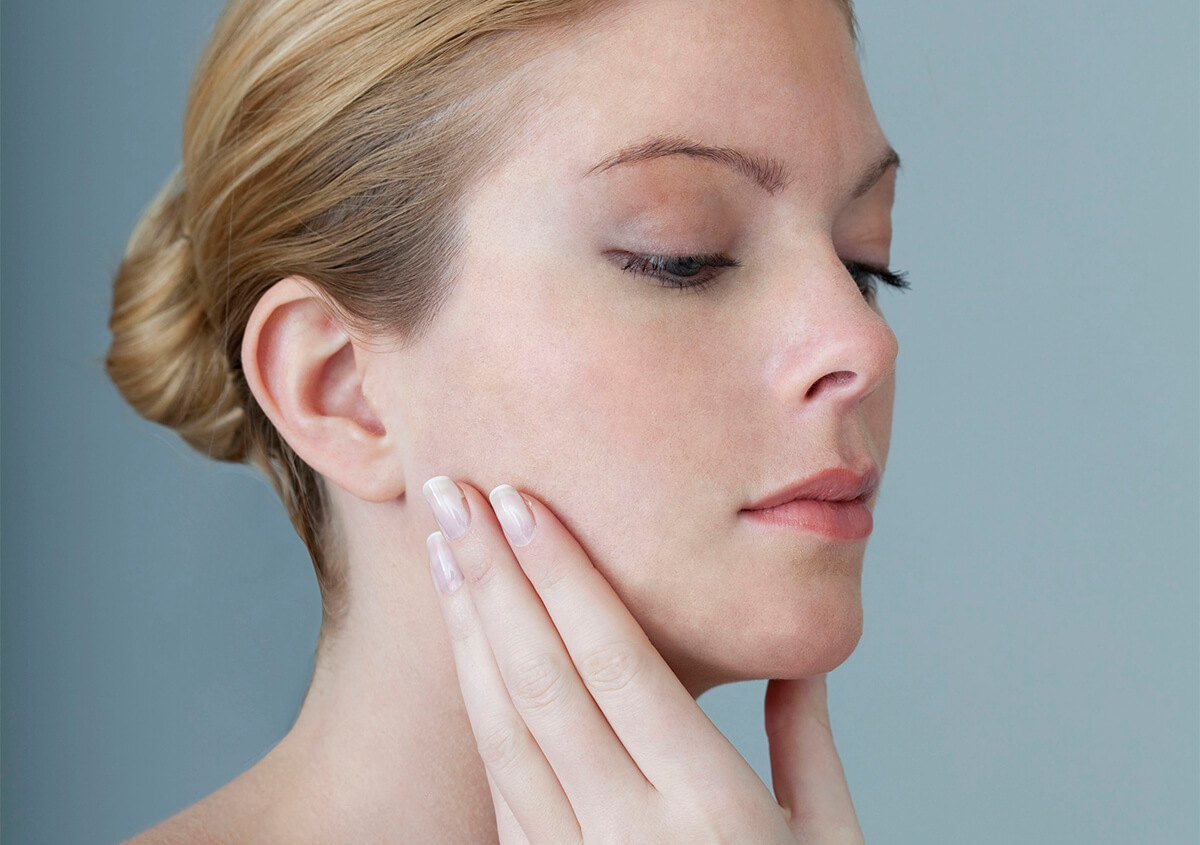Orthognathic / Jaw Surgery
Dr. Steinbacher’s Expertise
Jaw surgery (orthognathic) is widely regarded as one of the most difficult procedures to perform well – especially when trying to create the best cosmetic outcome. Dr. Steinbacher has written and published extensively on jaw surgery, including representation of 3D results, precise 3D planning, aesthetic and cosmetic optimization of these methods, enhancing and speeding a quick recovery, and many other topics. His background involves dental training and orthodontic understanding, plastic and maxillofacial surgical experience, and an extensive orthognathic case volume, performing many of these procedures each week.
He is a member of several maxillofacial, craniofacial, and aesthetic plastic surgery societies, and is a frequent invited speaker to share his concepts, techniques, and results nationally and internationally. Dr. Steinbacher authored the book “Aesthetic orthognathic surgery and rhinoplasty” showcasing his vast experience and philosophy. Dr. Steinbacher uses his aesthetic eye and artistic judgment, together with meticulous technical skills and attention to detail to give you the best jaw and facial results in line with mutual goals and objectives.
The Procedure
Jaw (Orthognathic) surgery and jawline/facial contouring is performed to enhance facial balance, optimize function (breathing), improve smile/occlusion, and achieve the most cosmetic and aesthetic result possible. We have new pathways and protocols reducing overall treatment time, including “surgery-first” philosophy, and “Invisalign” or clear-aligners as part of the treatment (with your orthodontist). These procedures greatly enhance quality of life, improve appearance, and lead to the most satisfied patients.
Click here to see the extended photo gallery.
Orthognathic (Jaw) surgery will correct jawbone/facial irregularities and imbalances. With properly aligned and repositioned jaws and teeth – function (eating, speaking, smiling, breathing) and facial aesthetics are optimized. Self-confidence, and positively perceived personality traits result from the overall improvement in facial balance and appearance. The typical jaw procedures include: Le Fort osteotomy (to address the maxilla, upper jaw), bilateral sagittal split osteotomies (BSSO) (to address the mandible, lower jaw), genioplasty (to address the chin). A number of adjuncts are readily used in our practice if necessary (jawline contouring or implants, cheekbone reduction or implants/augmentation, chin/neck liposuction, fat grafting, nasal procedures (rhinoplasty), skin treatments, eyelid surgery (blepharoplasty), chemical peel / tightening), among others.
We typically perform this surgery following an initial treatment phase with your orthodontist. We have worked with orthodontists all over the country and world – and will be happy to work with your existing orthodontist. If you do not have an orthodontist, and/or prefer “Invisalign” or “Surgery-first” protocols we will have you see one of our excellent collaborative orthodontists.
Conventionally, orthognathic surgery is performed when an individual has completed growth – However, this is not always the case, contact us for more information.
Orthognathic surgery is one of the most powerful and effective facial cosmetic procedures. This can address an excessively small chin or lower jaw (microgenia, migrognathia), an excessively prominent chin, lower jaw (or weak upper jaw) (microgenia, mandibular prognathism ([Hapsburg], maxillary hypoplasia). Your orthodontist or dentist may refer to dental / occlusal/ bite issues accompanying these jaw discrepancies (class II, class III, crossbite, open bite deformities). Additionally, significant facial asymmetry or jaw narrowing may be present and can be addressed.
Adjunctive cosmetic, contouring, or manipulation may be performed in concert with orthognathic, to create and even more balanced, aesthetic face, with optimized appearance. Lip procedures, fillers, fat grafting, facial bone contouring or reduction, facial bone implants or augmentation, jowl manipulation, double chin liposuction or tightening, skin tightening, cheek implants, blepharoplasty (eyelid surgery; double-eyelid surgery), rhinoplasty, and so forth.
Results
Click on the images below to see the animated sequences. Note that these are actual results, not simulations.
Click here to see the extended photo gallery.
Benefits of orthognathic (jaw) surgery include:
- Improved biting and chewing
- Improved swallowing and speech
- Smile and dental function
- Corrected facial imbalance and lip closure
- Corrected asymmetry such as underbites, overbites, crossbites, and small chins
- Correction of temporomandibular joint (TMJ) problems
- Breathing (while limiting snoring)
- Cure for sleep apnea
- Corrected facial injury and birth defects
- Improved aesthetics / cosmetics
- Jawline definition
Before And After Results Videos




Before the Procedure: What to Expect
You may undergo a “pre-surgical” orthodontic phase where your orthodontist lines up your teeth with respect to the individual jaw (so that when the jaws are moved in space the teeth meet well together). At least a month before surgery the orthodontist stops tooth movement and has a passive wire in place. Just prior to surgery the orthodontist may place small hooks on the wires and/or brackets. This protocol may be different with “surgery-first,” Invisalign, sleep apnea, and purely cosmetic cases, ask us at your consultation.
7-14 days prior to the procedure. We will see you to obtain a “final” set of dental models (or scanned dental occlusal arches), a cone-beam CT scan, and to look at your 3D facial image. This data will all be compiled and fused together to perform the CAD/CAM virtual analysis and manipulation of your jawbone positions. Guides, splints, and/or plates are generated to transfer the plan in a precise, reproducible way to your actual surgery. The splints are removed by the end of surgery in most cases. Occasionally, if your jaw needs an expansion or narrowing concurrently we may leave a “retainer-type” splint on your palate. This is unobtrusive and typically is not even noticed by the patient.
It’s time to love the way you look.
Discuss defining your jawline with us.
Basics About The Procedure
There are no scars/incisions on the outside. The surgery HIDDEN and is done from inside your mouth. So, there are no visible external scars. In rare cases there may be a small needle sized incision under the angle of the jaw – but this is exceedingly rare. When present this heals to become near invisible. Additionally, if submental liposuction is performed, a small 2mm incision may be present hidden underneath the chin.
You are not wired shut. The stories of jaw surgery from 20-30 years ago of having ones teeth wired shut does not hold true today. The bones are held together with small plates and screws and do not require complete immobilization. That said, we prefer tighter elastics the first week (similar to splinting a sprained ankle), allowing you jaw and facial muscles to relax (not need to activate).
After the Procedure: Recovery
After the procedure you may stay in observation for a short period of time. We will discuss this during your consultation.
Several advances have made the recovery simpler and easier. Each patient is individual and unique, and each case, and case complexity if different. As such a range of recovery periods can be experienced. Depending on your school or work specifics, and activities will inform the return date. Some patients have returned as soon as 7-10 days to school. Whereas others have elected longer period of recovery prior to returning to work if strenuous activity is expected of them.
Swelling: Reaches its peak, together with some bruising, at 2-3 days after surgery. Ice, light compression, and head elevation can help minimize, and hasten return to baseline.
Diet: No straws first week; first 2-3 weeks, soft-blenderized food; next 2-3 weeks, soft light-chew diet; by 6 weeks, can return to any food, eating habits.
Oral hygiene: is critical, mouth rinses (immediately), brushing (after first week)
Activity: Full sports or heavy lifting, by 6-weeks postoperatively.
Return to orthodontist: depends on the individual case: as soon as 2-3weeks postoperative, always by 6-8weeks postoperative.
Additional Links:
Postop Care Video Patient Care Portal

Dr. Derek Steinbacher has devoted his life to aesthetic and life-changing surgery. He is an artistic and meticulous surgeon who draws patients from around the world due to his perspective, unmatched skill, and exceptional results. He is able to uniquely address the face (facelift + rejuvenation), jawline (orthognathic; chin; contouring; implants), nasal (rhinoplasty), eyelids, profile, neck, breast, and body with one-of-a-kind results.
He is a multiple Board-Certified, Fellowship-Trained Plastic, Cosmetic, and Cranio-Maxillofacial Surgeon. He is Fellow of the most prestigious surgical organizations, including the Society of Plastic Surgeons, the American College of Surgeons, the Royal College of Surgeons of Edinburgh, the Academy of Facial Plastic Surgery, Societies of Craniofacial and Maxillofacial Surgery, the Aesthetic Society, and the Rhinoplasty Society. He has served as Full-Professor of Plastic Surgery at Yale, including Director of the Cleft and Craniofacial Program, and Chief of Oral and Maxillofacial Surgery. Dr. Steinbacher has unparalleled training at premier institutions, including Harvard and Johns Hopkins. His perspective brings together the best aspects of many distinct – but related fields – and it is this intersection of scope and expertise, in addition to an artistic eye, which enables excellent comprehensive results.
Dr. Steinbacher's approach: technical acumen, meticulousness, and penchant for combining art and science, together with his eye for balance, beauty, and harmony, helps achieve outcomes that greatly improve a person's confidence, health, and overall quality of life. Patients can trust that they are always in good hands!


